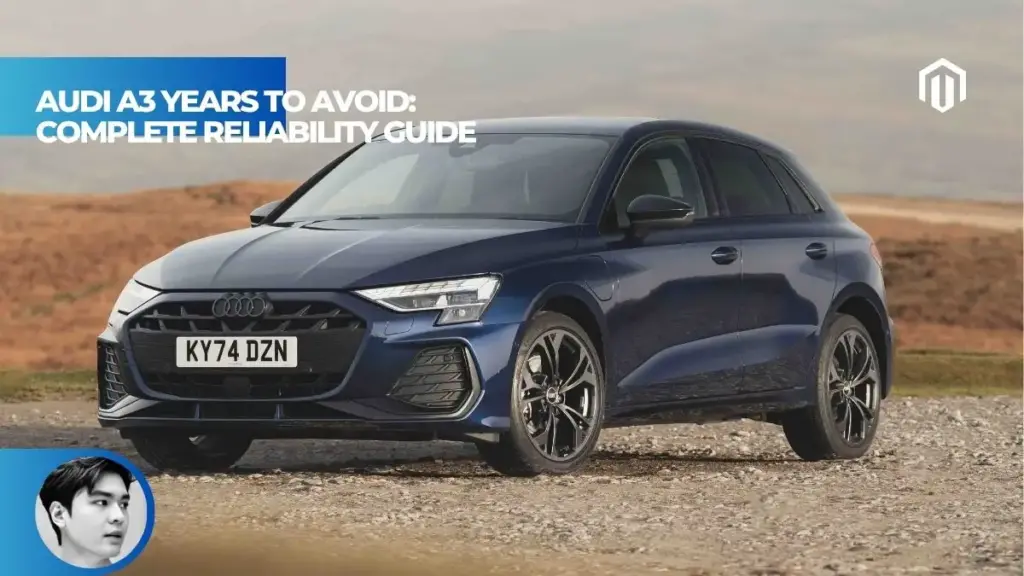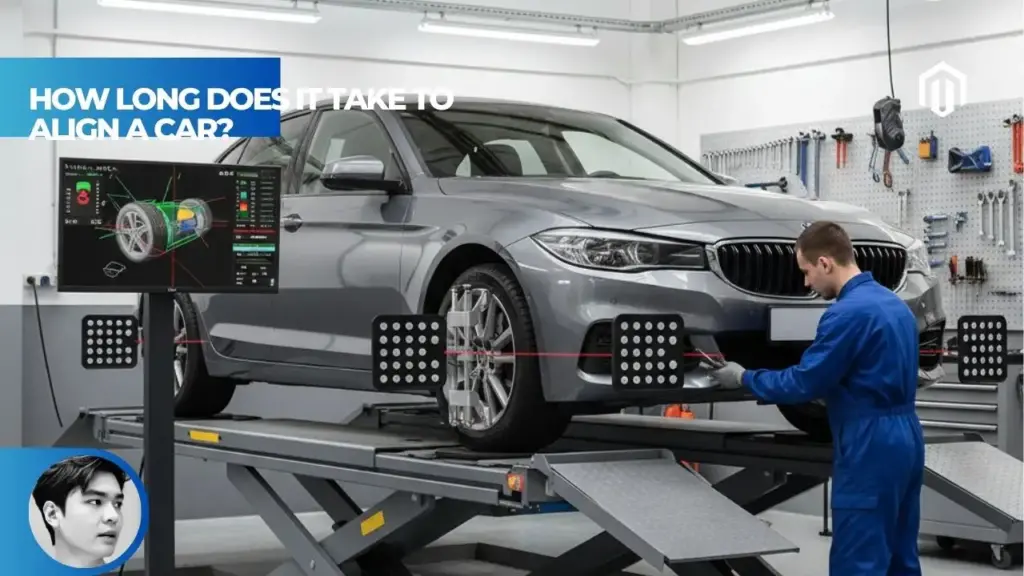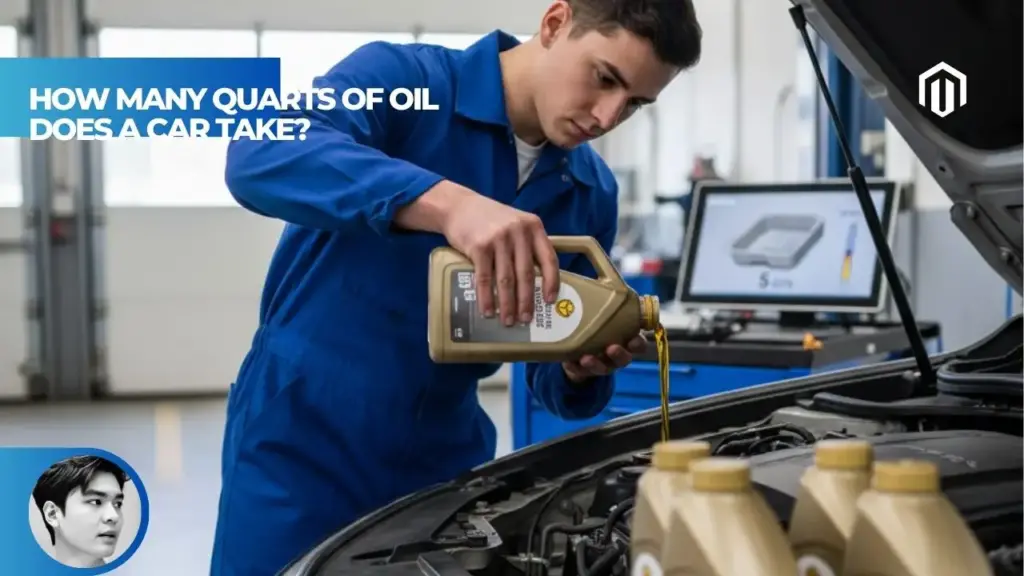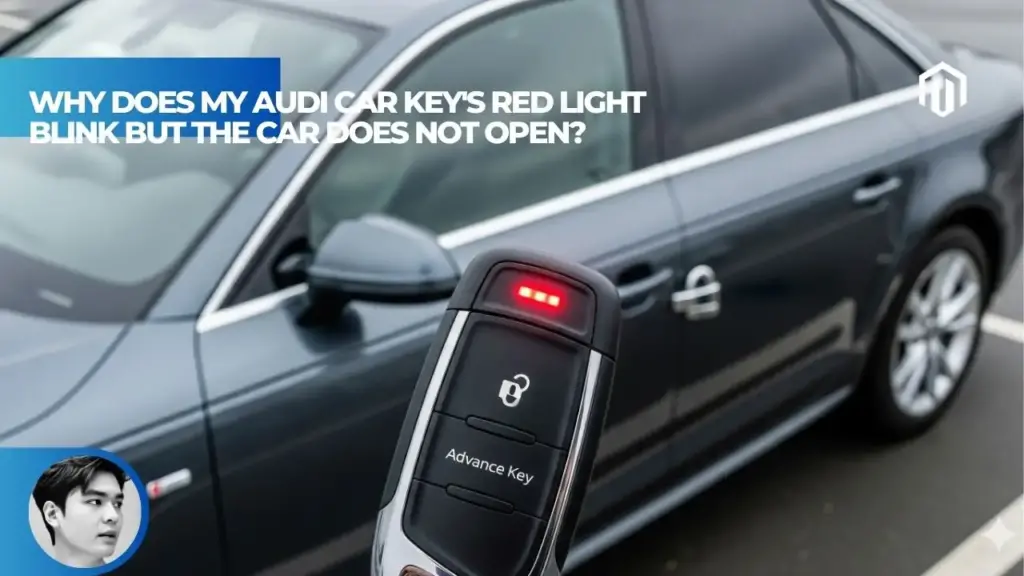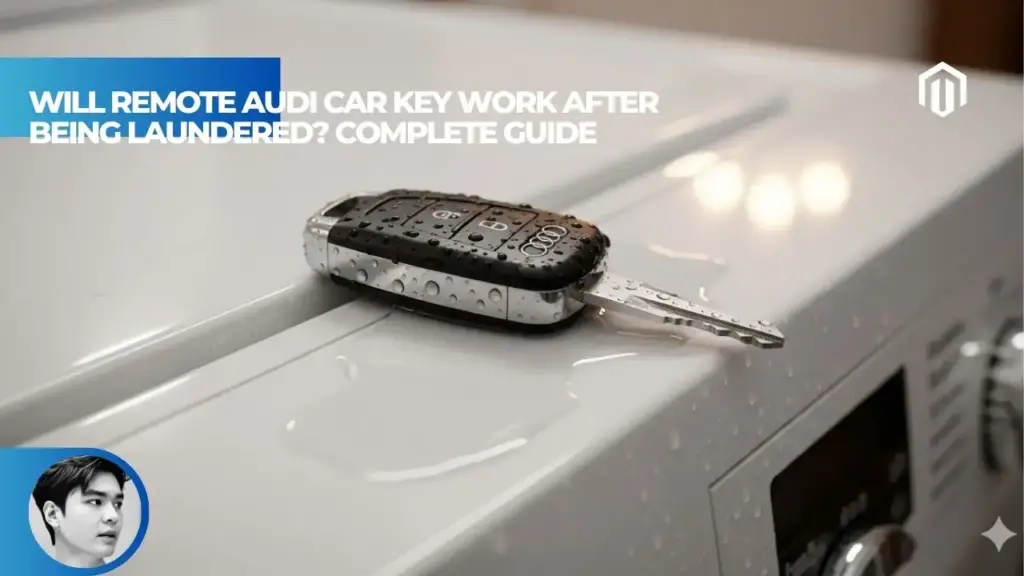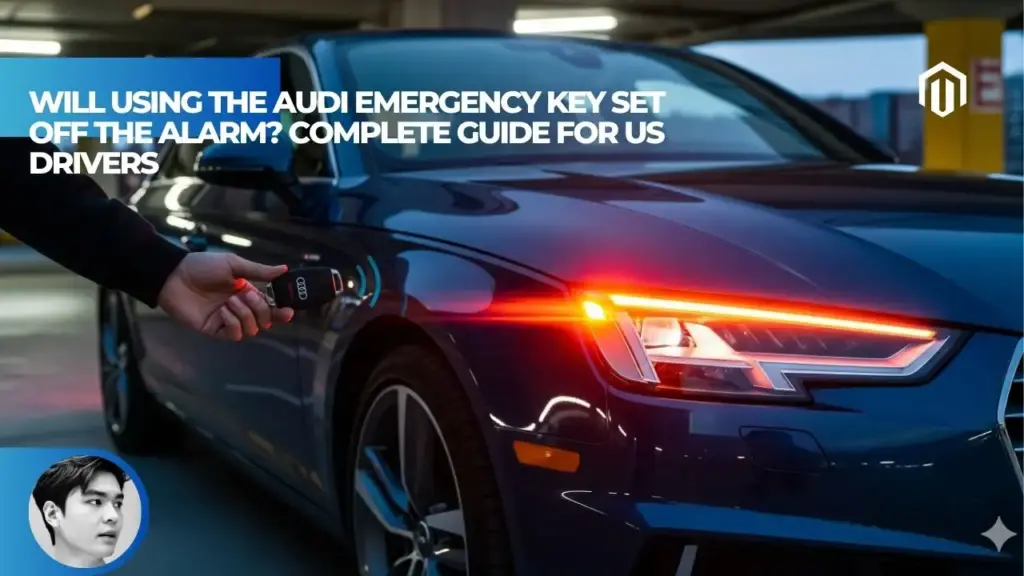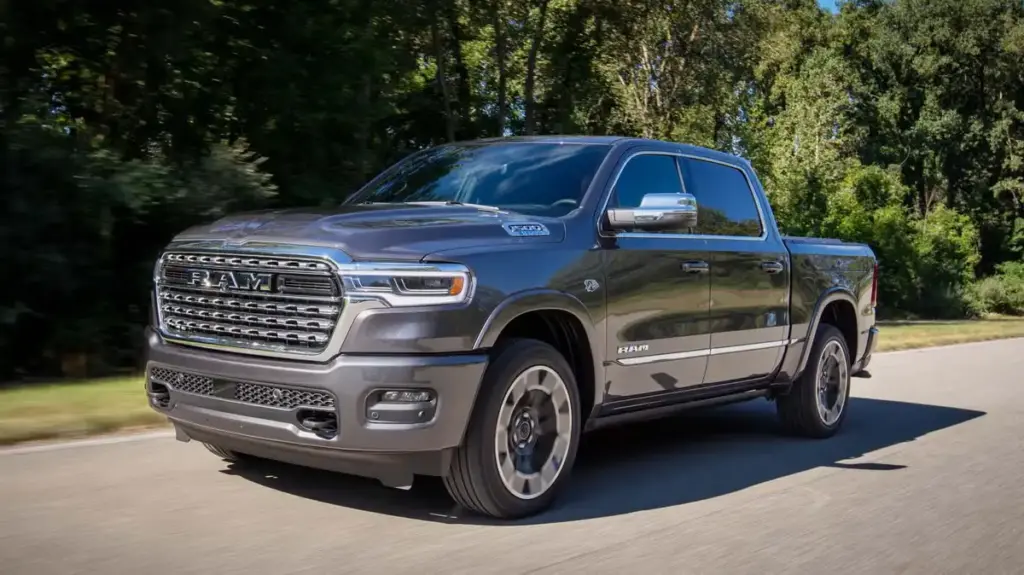You may also like:
The Audi A3 years to avoid are 2006-2013 (8P generation) and 2015-2016 (early 8V generation) due to expensive DSG/S-tronic transmission failures costing $2,000-$5,000 to repair and 2.0T engine issues including excessive oil consumption and timing chain tensioner failures. The best years to buy are 2017-2020 (facelifted 8V generation) or 2021+ (fourth generation), which resolved major reliability problems and offer proven dependability with modern features.

Worst Audi A3 Model Years to Avoid
Understanding which Audi A3 model years pose the highest ownership risks helps buyers make informed decisions and avoid costly repairs. The data consistently shows certain generations and specific years with significantly higher failure rates than others.
Audi A3 8P Generation Problems (2006-2013)
The 8P generation represents the most problematic era in Audi A3 history, with mechatronic unit failures affecting up to 40% of DSG-equipped models[1]. These years suffered from first-generation direct-shift gearbox technology that proved unreliable in real-world conditions. Owners report transmission problems beginning around 60,000-80,000 miles, often without warning signs.
The 2006-2009 models particularly struggled with high-pressure fuel pump (HPFP) failures that could cause catastrophic engine damage. Replacement costs ranged from $600-$1,200, but consequential engine damage could total the vehicle. Understanding how many miles can Audi last becomes crucial when these models rarely exceed 150,000 miles without major repairs.
2015-2016 Audi A3 Issues (First 8V Generation)
The 2015-2016 model years marked Audi’s transition to the 8V generation, bringing new problems alongside unresolved older issues. These years experienced MMI infotainment screen failures in 25% of vehicles and premature water pump leaks affecting the cooling system[2]. The 2.0T engines continued suffering from excessive oil consumption, with some owners adding a quart every 1,000 miles.
According to Autvex analysis, the 2015 A3 ranks among the least reliable luxury compact cars, scoring just 2.5 out of 5 stars on RepairPal. Electronic gremlins plagued these models, from malfunctioning start-stop systems to erratic sensor behavior causing false warning lights.
2004-2008 Early Second Generation Problems
The 2004-2008 A3s introduced diesel options to the U.S. market but brought significant reliability concerns. Diesel oil pump failures occurred in 30% of TDI models, often requiring engine replacement[3]. Suspension components wore prematurely, creating clunking noises and poor handling characteristics by 50,000 miles.
These early models also suffered from turbocharger failures on both gasoline and diesel variants. Replacement costs averaged $1,500-$3,000, making ownership expensive beyond typical maintenance.
Unreliable Audi A3 Years Summary
Based on reliability data and owner reports, avoid these specific years:
- 2006-2009: Highest failure rates for DSG and HPFP
- 2010-2013: Continued transmission issues, timing chain problems
- 2015-2016: First-year 8V generation teething problems
- 2018: Surprisingly low reliability rating of 1/5 from some sources
Most Critical Transmission Problems by Year
Transmission failures represent the most expensive and common issues across problematic Audi A3 years, with repair costs often exceeding the vehicle’s value.
Audi A3 S-Tronic Transmission Problems
The S-tronic (Audi’s name for DSG) transmission promised lightning-fast shifts and improved efficiency but delivered widespread reliability problems. The dual-clutch design requires precise mechatronic unit operation, and when this fails, drivers experience jerky shifts, grinding noises, and complete transmission failure[4].
UK repair data shows DSG problems affect VW Group vehicles broadly, but the A3’s compact design creates additional heat management challenges. Symptoms typically begin with occasional harsh downshifts, progressing to inability to engage gears.
Audi A3 DSG Gearbox Failure Years
The DQ200 7-speed DSG gearbox used from 2008-2016 proved particularly problematic. Mechatronic unit failures peaked in 2009-2012 models, with failure rates approaching 35% by 100,000 miles[1]. The dry-clutch design couldn’t handle stop-and-go traffic stress, causing premature wear.
Failure patterns by year:
| Model Year | DSG Type | Failure Rate | Common Issue |
|---|---|---|---|
| 2006-2008 | 6-speed wet | 25% | Mechatronic unit |
| 2008-2012 | 7-speed dry | 35% | Clutch pack wear |
| 2013-2016 | 7-speed improved | 20% | Solenoid failures |
| 2017-2020 | 7-speed refined | <10% | Minor software issues |
Mechatronic Unit Failure Years
The mechatronic unit combines hydraulic and electronic controls for gear selection. When it fails, repair costs range from £2,000-£3,500 in the UK, translating to $2,500-$4,500 in the U.S.[1]. The 2010-2011 models experienced the highest failure rates, with some dealers reporting 8 out of 10 repairs failing to permanently resolve issues.
One 2016 S7 owner reported a $32,000 transmission replacement quote after mechatronic failure at 130,000 kilometers, highlighting how costs can spiral beyond economic repair[5].
Cost to Replace Audi Mechatronic Unit
Current 2025 pricing for mechatronic unit replacement varies significantly:
- Independent specialist: $1,500-$3,000
- Audi dealership: $2,500-$5,000
- Rebuilt unit with warranty: $1,200-$2,000
- DIY with used part: $500-$1,000 (high risk)
Labor typically accounts for 4-8 hours at $100-$200 per hour. Software updates and adaptation add another $200-$500. Compare this to the 2025 BMW 2-Series which uses traditional automatic transmissions with fewer issues.
Engine Problems in Problematic Years
Engine reliability issues compound transmission problems in affected model years, creating a perfect storm of expensive repairs.
Audi A3 2.0T Excessive Oil Consumption
The EA888 Gen 1 and Gen 2 engines (2008-2017) suffered from defective piston rings causing excessive oil consumption. Affected engines burn 1 quart per 1,000 miles or more, far exceeding Audi’s acceptable consumption rate[2]. A class-action lawsuit covered some repairs, but many owners faced $3,000-$5,000 piston ring replacements.
Oil consumption by engine generation:
- Gen 1 (2008-2012): Severe, often requiring rebuild
- Gen 2 (2013-2017): Moderate to severe, improved but not resolved
- Gen 3 (2015-2020): Minor, mostly resolved
- Gen 3B/4 (2021+): Negligible, issue eliminated
2.0 TFSI Timing Chain Tensioner Failure
The timing chain tensioner represents a catastrophic failure point in 2008-2013 2.0 TFSI engines. When the tensioner fails, the timing chain can skip, causing valves to contact pistons and destroy the engine[3]. Repair costs range from $2,000 for early detection to $8,000+ for complete engine replacement.
Warning signs include:
- Rattling noise on cold starts
- Engine misfires
- Check engine light with timing-related codes
- Sudden loss of power
Audi A3 Water Pump Failure Years
Water pump and thermostat housing failures plague 2015-2017 models due to plastic construction. The components crack from thermal cycling, causing coolant leaks and potential overheating[2]. Replacement costs average $800-$1,500 at dealerships, though aftermarket metal replacements offer better longevity.
Carbon Buildup Audi 2.0 FSI
Direct injection engines from 2006-2016 accumulate carbon deposits on intake valves, reducing power and causing rough idling. By 60,000 miles, many A3s require walnut blasting service costing $500-$1,000[3]. The issue stems from lack of fuel washing over valves in direct injection designs.

Electrical and Other Common Issues
Beyond drivetrain problems, electrical gremlins and component failures add to ownership frustrations in problematic years.
Audi A3 MMI Screen Failure
The Multi Media Interface (MMI) system in 2015-2018 models suffers from screen blackouts, frozen displays, and complete failures[6]. Replacement costs range from $1,500-$3,000 for the entire unit. Software updates sometimes resolve issues temporarily, but hardware failures require complete replacement.
According to Autvex research, MMI problems affect 15.8% of 2013-2020 A3s, making it the most common non-mechanical issue. The problem often coincides with warranty expiration, leaving owners with expensive repairs.
Audi A3 Electrical Problems by Year
Electrical issues vary by model year but consistently plague certain generations:
- 2006-2013: Window regulators, central locking failures
- 2015-2016: Start-stop system malfunctions, sensor failures
- 2017-2018: Virtual cockpit glitches (if equipped)
- 2019-2020: Minor software bugs, mostly resolved via updates
2015-2016 Water Pump Leak Issues
The 2015-2016 models’ water pump issues deserve special attention due to their frequency and potential for engine damage. The plastic impeller and housing crack at the seams, often failing between 40,000-60,000 miles[2]. Early detection saves engines, but ignored leaks cause overheating and head gasket failure.
Audi A3 e-tron Problems and Reliability
The 2016-2018 A3 e-tron plug-in hybrid adds complexity with mixed results. Beyond standard A3 issues, e-tron models suffer from:
- Battery degradation: 20-30% capacity loss by 80,000 miles
- Charging system failures: $2,000-$4,000 repairs
- Software conflicts: Between electric and gas systems
- Limited dealer expertise: Higher diagnostic costs
One owner reported catastrophic transmission failure at 61,000 miles with Christmas tree dashboard warnings, typical of e-tron drivetrain stress[7].
Best Audi A3 Years to Buy
After years of refinement, certain Audi A3 models emerged as reliable, enjoyable ownership propositions worth considering.
Most Reliable Audi A3 Generation
The facelifted third generation (2017-2020) represents peak A3 reliability, addressing previous issues while maintaining Audi’s premium appeal. These years benefit from improved EA888 Gen 3 engines and refined S-tronic transmissions with updated mechatronic units[6].
RepairPal data shows 2017+ models achieving 88.5% reliability scores, significantly improved from earlier years. Exploring the 2017 Audi A3 reveals why this model year marks the turning point.
Audi A3 8V Reliability (2017-2020)
The 8V generation’s mid-cycle refresh brought substantial improvements:
- Revised DSG programming: Smoother shifts, better longevity
- Updated 2.0T engine: Resolved oil consumption issues
- Improved electronics: More stable MMI system
- Better build quality: Fewer rattles and squeaks
Consumer Reports rates 2017-2020 A3s as above average reliability, a significant improvement from previous generations[8].
Is the 2017 Audi A3 Reliable
The 2017 A3 marks the first truly reliable modern A3, with Edmunds rating it 4 out of 5 stars for reliability[8]. Key improvements include:
- Revised piston rings eliminating oil consumption
- Updated water pump design with metal components
- Refined DSG transmission with fewer mechanical issues
- Standard Audi Pre Sense safety features
Maintenance costs average $741 annually, reasonable for a luxury compact car. Check out the 2018 Audi A3 for continued improvements.
Is the 2019 Audi A3 Reliable
The 2019 model year represents peak third-generation refinement. With most issues resolved, these models offer excellent reliability scores and modern features like Virtual Cockpit and advanced driver assistance[6]. The 2019 received minimal complaints, with most related to minor software glitches resolved through updates.
J.D. Power rates the 2019 A3 at 78/100 for reliability, on par with BMW competitors. Consider the 2019 Audi A3 for the best balance of reliability and features.
Why the Best Years Are Better
Understanding the specific improvements in recommended model years helps justify their premium over problematic predecessors.
Improved Powertrains in Later Years
The EA888 Gen 3B engine (2019-2020) and Gen 4 (2021+) eliminated previous design flaws:
- Improved piston rings: No oil consumption issues
- Timing chain on engine front: Easier service access
- Better thermal management: Reduced carbon buildup
- Miller cycle operation: Improved efficiency and longevity
These engines routinely exceed 200,000 miles with proper maintenance, compared to 100,000-150,000 for problematic generations[3].
Refined S-Tronic/DSG Transmissions
Post-2017 DSG transmissions received crucial updates:
- Stronger clutch packs: 50% faster shifts under load
- Improved mechatronic units: Better heat dissipation
- Revised software: Smoother low-speed operation
- Extended service intervals: 40,000 mile fluid changes
The 2025 S3’s DSG features compressed clutch packs from the RS3, demonstrating continued refinement[9].
Modern Features and Safety Systems
Later models include standard equipment once optional or unavailable:
- Audi Pre Sense: Automatic emergency braking
- Virtual Cockpit: 10.3″ digital instrument cluster (2018+)
- Wireless charging: Standard on many trims (2019+)
- Apple CarPlay/Android Auto: Standard integration
- LED lighting: Full LED headlights and taillights
Understanding does Audi charge for Apple CarPlay helps evaluate ongoing ownership costs.
Audi A3 1.8T vs 2.0T Reliability
The 1.8T engine (available 2015-2016) offered a lower-cost alternative but proved less reliable than refined 2.0T engines:
| Engine | Years Available | Reliability | Common Issues |
|---|---|---|---|
| 1.8T | 2015-2016 | Fair | Turbo wastegate, carbon buildup |
| 2.0T Gen 2 | 2015-2017 | Fair-Good | Oil consumption (early) |
| 2.0T Gen 3 | 2017-2020 | Good-Excellent | Minor carbon buildup |
| 2.0T Gen 4 | 2021+ | Excellent | None significant |
The 2.0T Gen 3 and later proves most reliable, making 2017+ models with this engine the best choice.

Key Takeaways
- Avoid 2006-2013 due to DSG failures costing $2,000-$5,000
- Skip 2015-2016 for MMI problems and unresolved engine issues
- Best years are 2017-2020 with proven reliability improvements
- 2021+ fourth generation offers latest technology with good initial reliability
- Mechatronic repairs can exceed vehicle value on older models
- Pre-purchase inspection essential focusing on transmission and timing chain
- Budget $3,000-$5,000 for potential repairs on problematic years
Next Steps
Start your search focusing on 2017-2020 Audi A3 models, particularly 2019-2020 for maximum reliability and modern features. Request comprehensive service history showing DSG fluid changes every 40,000 miles and timing chain tensioner updates on applicable models.
Arrange a pre-purchase inspection with an Audi specialist or independent German car expert, specifically checking:
- Mechatronic unit function via diagnostic scan
- Oil consumption test if considering pre-2017 models
- Timing chain tensioner condition (use stethoscope for rattles)
- Water pump for leaks or seepage
- MMI system functionality including all screens
If considering problematic years due to attractive pricing, budget $3,000-$5,000 for inevitable repairs. Factor these costs when comparing to newer, more reliable alternatives. Research Audi A4 years to avoid if considering larger Audi models. For peace of mind, focus on certified pre-owned 2017+ models with extended warranties covering major components.
FAQs
What are the worst years of the Audi A3 to buy?
Avoid 2006-2013 (8P generation) and 2015-2016 models due to DSG transmission and engine problems costing thousands in repairs.
Do Audi A3s have a lot of problems?
Early models (2006-2016) have significant transmission and engine issues; 2017+ models are much more reliable with resolved problems.
What are the most common problems with the Audi A3?
DSG/S-tronic transmission failures, 2.0T oil consumption, timing chain tensioner failure, and MMI screen issues are most common.
Is the 2015 Audi A3 a year to avoid?
Yes, 2015-2016 models have high complaint rates for electrical issues, water pump leaks, and continued oil consumption problems.
What years did the Audi A3 have transmission problems?
2006-2013 models had severe DSG/S-tronic issues; problems continued but lessened through 2016 before being largely resolved.
What is a Mechatronic unit failure on an Audi A3?
The Mechatronic unit controls DSG shifting; failure causes harsh shifts, inability to engage gears, and costs $2,000-$5,000 to replace.
How much does it cost to fix an Audi S tronic transmission?
Mechatronic unit replacement costs $2,000-$5,000 depending on shop and whether using new or rebuilt parts.
Does the Audi A3 2.0T engine burn oil?
Yes, 2008-2017 2.0T engines commonly have excessive oil consumption due to faulty piston rings, using 1 quart per 1,000 miles.
What is the most reliable year for a used Audi A3?
2018-2020 models offer the best reliability with resolved major issues, modern features, and proven dependability.
Is the 2017 Audi A3 a reliable car?
Yes, 2017 marks the beginning of more reliable years after addressing earlier generation problems with improved engines and transmissions.
Is the Audi A3 e-tron (hybrid) a reliable car?
Early e-tron models (2015-2016) share common A3 issues plus potential hybrid system complexity, making them less reliable than gas-only versions.
References
- Eco-Torque. (2025). 7 Speed DSG Gearbox Problems | Mechatronic Faults. https://eco-torque.co.uk/blogs/news/7-speed-dsg-gearbox-problems
- CarParts.com. (2025). Audi A3 Reliability and Common Problems. https://www.carparts.com/blog/audi-a3-reliability-and-common-problems/
- CarExamer. (2025). Audi A3 Problems Common Issues and Repair Costs. https://carexamer.com/blog/audi-a3-problems/
- Sell Your Problem Car. (2025). DSG Gearbox Problems – What UK VW, Audi, SEAT & Skoda Owners Should Know. https://www.sellyourproblemcar.com/dsg-gearbox-problems/
- Reddit. (2025). $32,000 Transmission Replacement – Audi. https://www.reddit.com/r/Audi/comments/1m0udqg/
- What Car. (2024). Used Audi A3 – 2013-2020 Reliability & Common Problems. https://www.whatcar.com/audi/a3/hatchback/used-review/
- Audi A3 E-tron Forum. (2025). Sudden and catastrophic transmission failure. https://www.myaudia3etron.com/threads/sudden-and-catastrophic-transmission-failure.12884/
- Edmunds. (2025). 2017 Audi A3 Review & Ratings. https://www.edmunds.com/audi/a3/2017/review/
- MotorTrend. (2024). 2025 Audi Cars: What’s New for the A3, A5, A7. https://www.motortrend.com/features/2025-audi-lineup-updates-changes

I am a senior automotive analyst at Autvex. Expert vehicle evaluations, in-depth reviews, and objective analysis helping readers make informed automotive decisions with years of industry experience.

